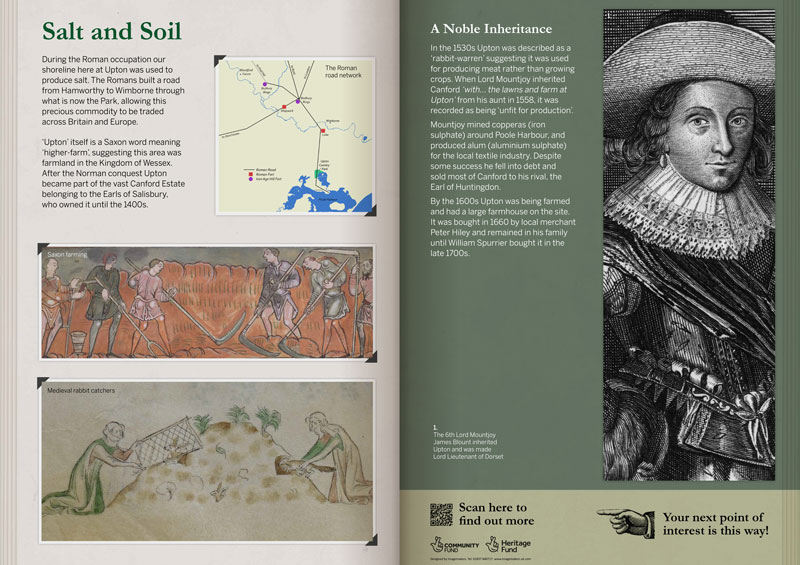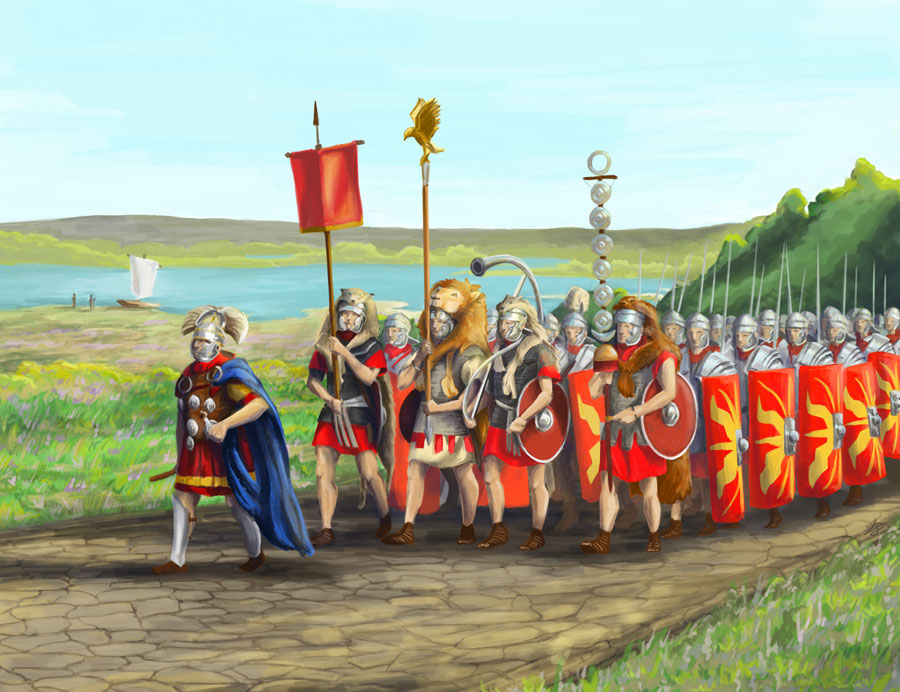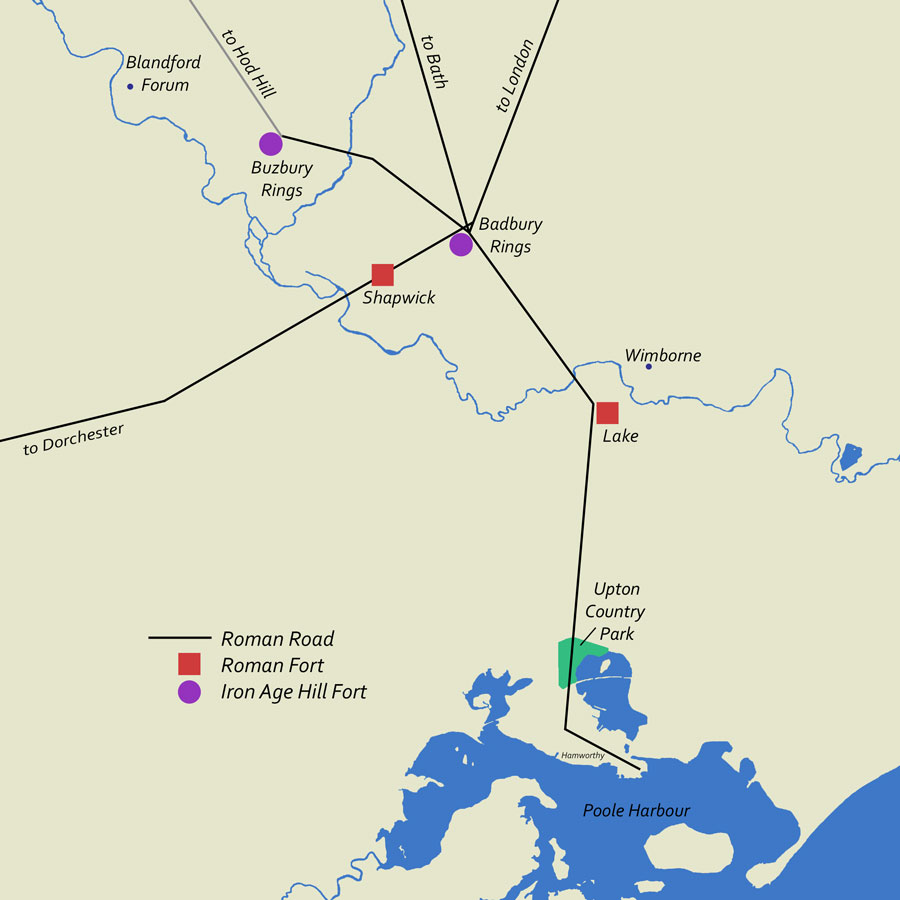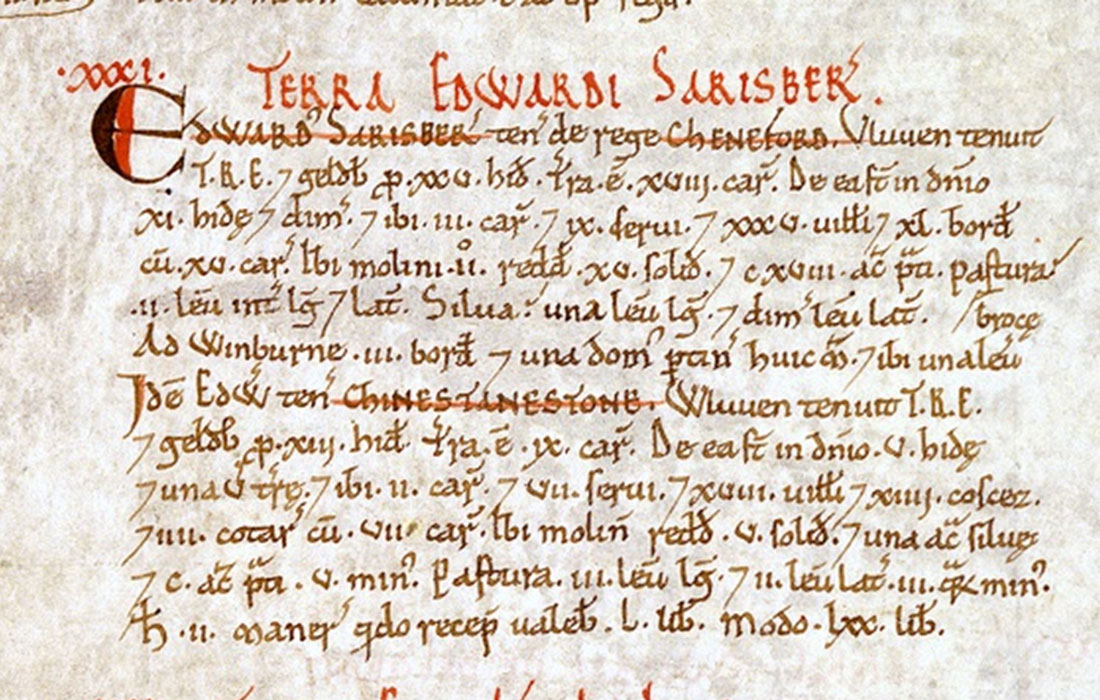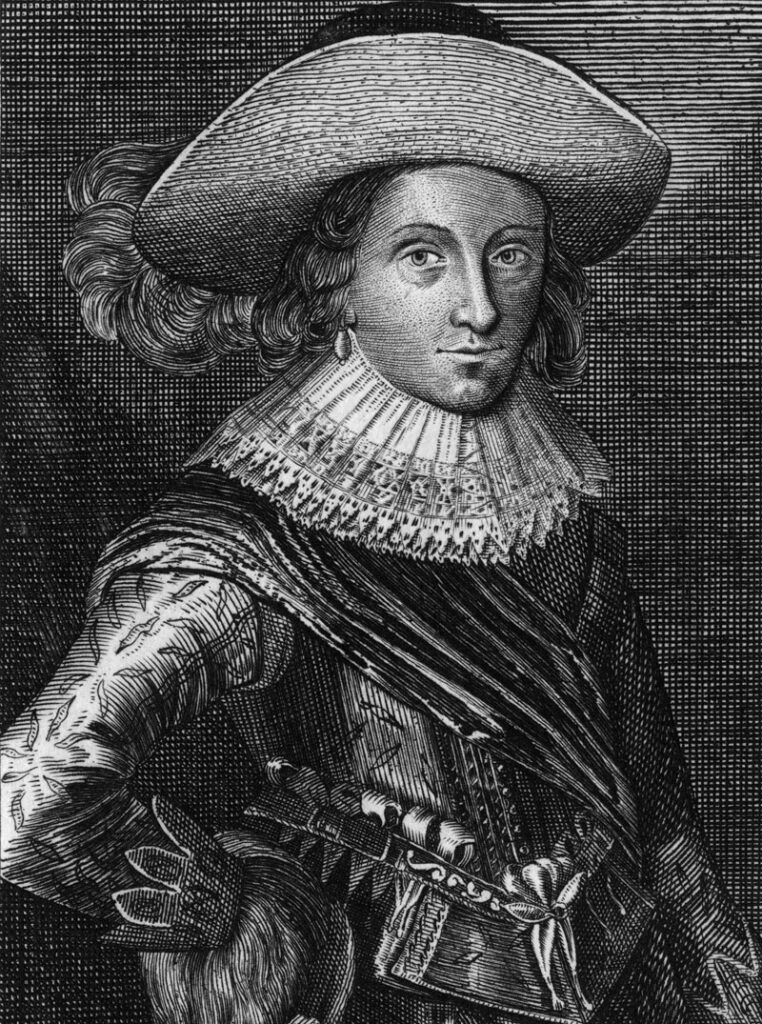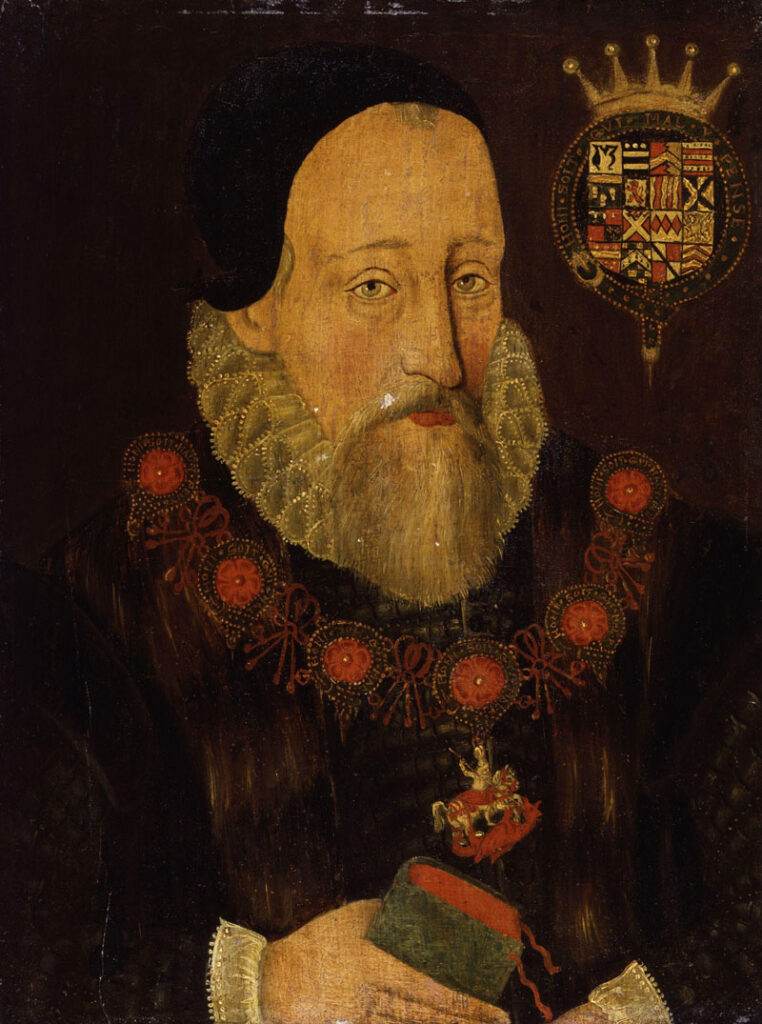Salt and Soil
During the Roman occupation our shoreline here at Upton was used to produce salt. The Romans built a road from Hamworthy to Wimborne through what is now the Park, allowing this precious commodity to be traded across Britain and Europe.
The panel in the Park
On this page:
Roman Upton
The area of Dorset in which Upton Country Park now sits was once home to tribes of Iron Age people known as the Durotriges. Using ringed hill forts, such as Badbury Rings as centres for trade and safety, they worked the land, fished in log boats and produced high quality pottery known as black burnished ware, from the local high-quality clays.
When the Romans invaded Britannia in 43AD the Legion II Augusta under the command of future emperor Vespasian, pushed through to Dorset defeating the Durotriges tribes. They built the Roman road which runs from Hamworthy to Badbury Rings through the centre of the current Country Park, linking the newly established port at Hamworthy (Roman Moriconium) to Exeter, Bath and London.
They also took control of the salt works previously worked by the Durotriges, located along the shoreline of the Park. This commodity, used in the preservation of foods, was so precious that Roman soldiers were often paid with it. Hamworthy became a prosperous port, sending its own goods, salt and pottery across Europe and Britain.
Domesday Records
The Saxons continued to farm the local area, the name Upton believed to mean “higher-farm” in Old English.
However, the focus of “urban life” shifted to Wareham as a significant stronghold, with Poole harbour used as safe place to moor on the way up the Frome. The Harbour played a significant role in the siege of Wareham in 875 for this very reason, the Vikings using it to hide their ships to attack from the sea. It was only thanks to some severe storms scuppering their boats that Alfred and the citizens of Wareham were saved from attack from the water.
At the time of the Norman conquest the land at Upton was part of a 3000-acre estate called Cheneford (Canford Magna) owned by Wulfwynn, who is believed to have been a woman. The Domesday entry tells us that by 1086 this estate had been given to Edward, Earl of Salisbury.
The Domesday entry for “Cheneford”, courtesy of National Archives
It remained in the possession of the Earls of Salisbury until the 1400s, where it then went though a series of owners including the Duke of Bedford, the Bishop of Winchester, the Duke of Clarence and Henry VIII.
Upton in the 16th Century
In 1553, the Marchioness of Exeter, Gertrude Courtenay, was given the Canford Estate by Queen Mary I, and she owned it for five years until her death in 1558.
Gertrude was a prominent figure in the Tudor court. Her husband, Henry Courtenay, was a cousin of King Henry VIII and Gertrude was a friend of his first wife, Catherine of Aragon. When Henry VIII wanted a divorce from Queen Catherine, it had far-reaching consequences and led to a break with the Catholic church.
These were turbulent times and in this ever-changing climate, a person’s religious convictions could determine their fate. The Courtenays had Catholic connections, and this brought them into conflict with the Protestant reformer, Thomas Cromwell.
Gertrude and Henry Courtenay were accused of being part of a conspiracy to overthrow Henry VIII. Their estates were seized and they were imprisoned in the Tower of London. Henry Courtenay was executed, but Gertrude was pardoned and released.
When the Catholic Queen Mary I came to the throne in 1553, Gertrude’s fortunes improved. She had known the Queen in former days, and Mary rewarded her loyalty by presenting Gertrude with the estate of Canford Manor.
How much time Gertrude spent on the estate is unknown, but on her death, she was placed in a tomb in Wimborne Minster. William Bankes, visiting it in 1838, wrote that he found her mummified body ‘quite as well embalmed as the Egyptian mummies are’. And Bankes claims that he left the Minster carrying a lock of her hair, which he was apparently able to cut off!
In the latter half of the 16th century the estate was owned by the 6th Lord Mountjoy, James Blount, who inherited it in 1558 from a relative, Lady Courtenay.
James Blount was a well-known public figure. In 1559, he was made Lord Lieutenant of Dorset, and later a Justice of the Peace, but his personal life was far less successful. He was also an alchemist with an extravagant lifestyle and significant financial problems.
The land at this time is described as “unfit for production” and a “rabbit-warren”, suggesting its use as farmland may have declined but that it may have been used in the production of rabbit as a commodity for meat and fur.
Blount tried to make his fortune by mining copperas and manufacturing alum, used in the textiles industry and had to mortgage some of his land at Upton to finance it. Some of the effects that this mining had on the landscape can still be seen on Brownsea Island.
He did have some success at mining copperas, but he lost more money than he gained and fell heavily into debt. In 1570 he ended up selling a large proportion of Canford Manor, including the land at Upton, to his rival Henry Hastings, the 3rd Earl of Huntingdon. Hastings also hoped to make his fortune from the mines, but Blount had retained control of them and a bitter legal battle followed. James Blount died in 1581, the court case still ongoing, and still in debt.
In 1625, a building of some significance, formally designed with a walled courtyard and gate as well as out-buildings and marked Upton Farme appears on maps from the Bankes Family Estate (then resident at Corfe Castle), but there does not yet appear to be any written records of this building left to us. Marked fields and small areas of woodland suggest that the land was in fact now useful for farming. In 1660 The Upton estate was bought by prominent local merchant Peter Hiley whose family retains it until at least 1753.

